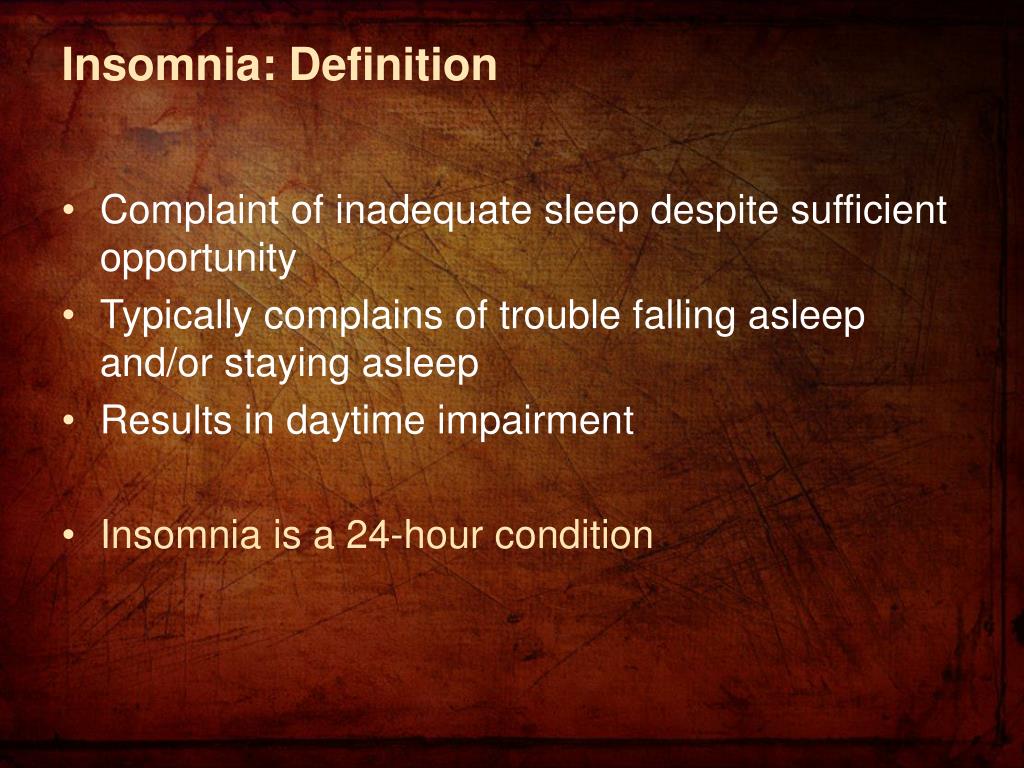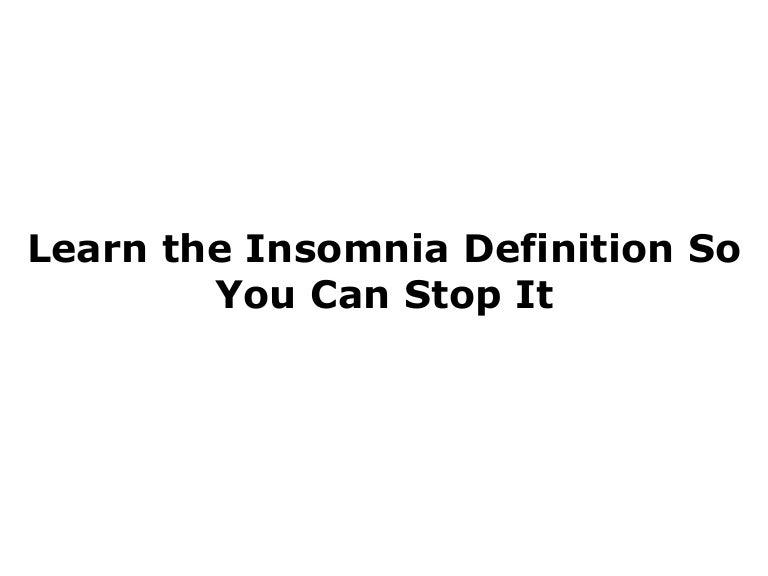
For example, teenagers fall asleep later at night than younger children and adults because melatonin is released and peaks later in the 24-hour cycle for teens.

The rhythm and timing of the body clock change with age. When flying to a different time zone, a mismatch is created between a person’s internal clock and the actual time of day. Night shift workers often have trouble falling asleep when they go to bed and may have trouble staying awake at work because their natural circadian rhythm and sleep-wake cycle are disrupted. Exposure to light can also make it difficult to return to sleep after being awakened.
NURSING ACTIONS FOR INSOMNIA DEFINITION TV
Examples of bright artificial light include the light from a TV screen, computer, or smartphone. Exposure to bright artificial light in the late evening can disrupt this process, making it hard to fall asleep.

Specialized cells in the retina process light and provide messages to the brain to align the body clock with periods of day or night. įactors that influence a person’s sleep and wakefulness include medical conditions, medications, stress, sleep environment, and foods and fluids consumed, but the greatest influence is exposure to light. A third hormone, cortisol, is released in the early morning hours and naturally prepares the body to wake up. The amount of melatonin in the bloodstream peaks as the evening wears on. Melatonin signals the body that it’s time to prepare for sleep and creates a feeling of drowsiness. When it gets dark, the body also releases a hormone called melatonin. While sleeping, the body breaks down adenosine. While awake, the level of adenosine in the brain continues to rise, with increased levels signaling a shift toward sleep. Adenosine is linked to this drive for sleep.

The homeostatic sleep drive also regulates sleep intensity, causing a person to sleep longer and more deeply after a period of sleep deprivation. A pressure to sleep builds with every hour that a person is awake, reaching a peak in the evening when most people fall asleep. Sleep-wake homeostasis keeps track of a person’s need for sleep.


 0 kommentar(er)
0 kommentar(er)
